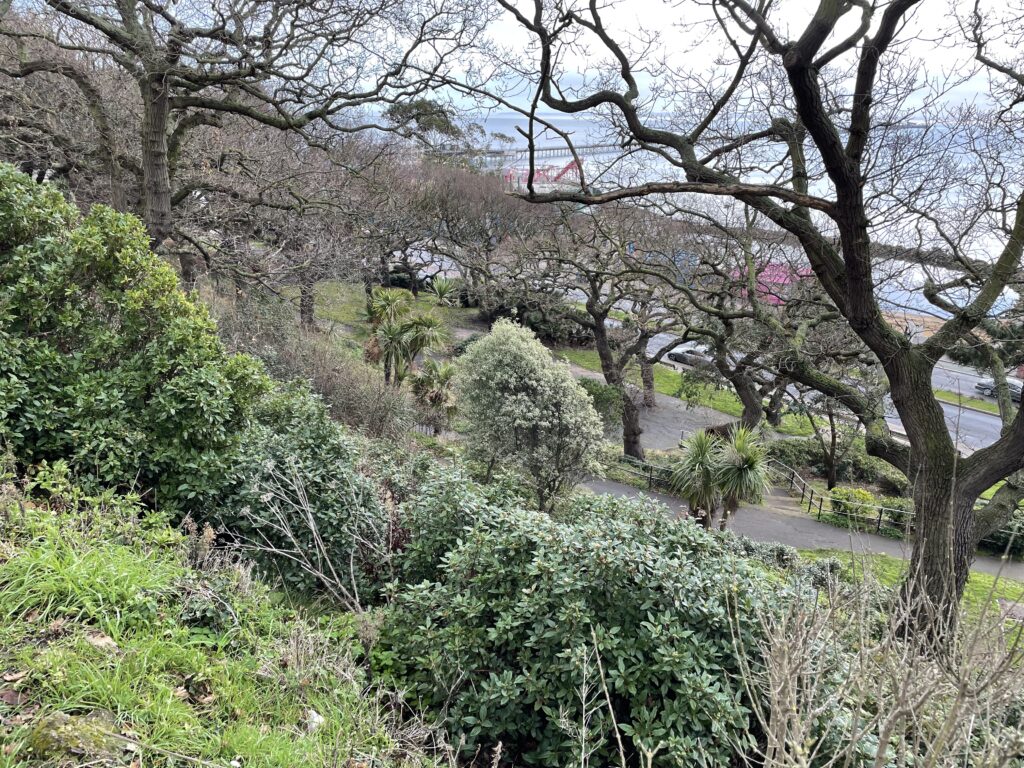
Quiz Night is back!


Please see our Autumn Newsletter here

For the first time in Southend-on-Sea and following application to Historic England by Milton Society, a garden has been Listed. The historic Shrubbery gardens beside Pier Hill, site of the historic and magical Never Never Land, are now listed after assessment by Historic England. Listed status has also been granted to the 1930s sun shelter that sits below the Westcliff Hotel.
However, application for the wider cliff gardens dating from the Victorian period and extending up to the Cliffs Pavilion, was refused designation after a flawed assessment and then appeal by Milton Society. Incorrectly, Historic England included the large landslip area which was bound to negatively influence consideration of the remaining, intact gardens. On appeal and unsurprisingly, the original decision was upheld, even with the land slip area excluded from consideration.
Whilst is is great to see the Listing recognition, which we hope will help to protect the Shrubbery gardens, application for the same gardens was refused by Historic England as recently as 2023. A further application by us was submitted in 2024 and this led to their re-opening of the file in early 2025. This application also had the significant support of the Essex Garden Trust. The resultant Listing is very welcome but Historic England’s errors and the reversal of part of their decision rather cast doubt on their Listing process. It suggests that something more than historic significance is at play and this should result in further review.
But we can take pleasure in knowing that all our documented efforts were, at least in part, successful and now Southend has it’s first Listed gardens which should help with future protection and funding bids.
We will now push the Council for the whole of the cliff gardens to become a conservation area as we are still very concerned about the poor condition of these historic gardens and have maintained our campaign to ‘Save Our Cliff Gardens’ which you can support here https://www.change.org/p/save-our-cliffs-in-southend-on-sea?source_location=search
Please see the Spring 2025 newsletter here
Please see the very full February 2025 Newsletter here
Read our latest November 2024 Newsletter here….
The Southend Cliff Gardens are a remarkably special place in our city and our history. They have been used by huge numbers of people over the years and are an important, bio-diverse green space at the heart of our seafront. South facing and overlooking the Thames, they give a unique view of our estuary and coastal location.
But they have been under serious threat for some time. Ongoing minor slippage is displacing foot paths and steps, and rather than repair these over time, the Council has taken to simply barricading footpaths. This technique has spread and it is easy to see that it will get worse and one day we will be barred from all of the sloping cliff gardens. Other problems also exist and the general lack of maintenance is now becoming critical. Quite frankly, it casts a very poor impression of our city.
But the Cliff Gardens are important and Milton Society have researched them and written a paper describing their fascinating history. This goes back to the C18 and the earliest use of the Shrubbery gardens for access to the first bathing huts, through the Victorian and then Edwardian expansion of the gardens and their use for perambulation and taking in the air to entertainment at Happy Valley and later, Floral Hall. Large crowds attended and even political rallies with took place with visits from Lloyd George and Ramsey MacDonald. Numerous shelters, the Queen Victoria Statue, the funicular lift and the bandstand were all constructed at this time. The gardens were further expanded to the west-cliff during the interwar years and included two large sun shelters (one survives today) and various ornamental features. Post war saw the construction of the Cliffs Pavilion, clearly linked to the earlier but then lost Floral Hall.
You can read this paper here: Southend Cliff Gardens – A review for National Listing on the Register of Park and Gardens
Latterly, the cliffs suffered a major slip and the bandstand had to be relocated. Whilst the cliffs have been stabilised the landscaping has been left, almost deserted as a crudely leveled terrace and no attempt to renew or rebuild the ornamental landscaping.
Now is the time to step in and Save Our Cliffs – watch this space for our emerging campaign!
Milton Society is proud to be a leading supporter and driving force of the Hamlet Court Calling project, working to bring about renewal and regeneration in Hamlet Court Road, Westcliff-on-Sea. The project has the support of traders, residents and community groups as well as the Government’s High Street Task Force and Southend City Council.
The road has amazing heritage in its architecture and history but now it needs us all to help build a brilliant and sustainable new future, where businesses can thrive, residents can live happily and safely, and visitors can enjoy a renewed and upbeat environment. The project is fizzing with ideas from small quick wins to longer terms big goals. This includes a live crowd funding project to bring back the Christmas / festive season lights in the road which you can contribute to here https://www.justgiving.com/crowdfunding/Light-Up-Hamlet-Court-Road
Find out more about Hamlet Court Calling at www.hamletcourtcalling.org
30 October 2023
Milton Society has applied to Southend City Council for a review of their 2021 decision not to designate the so called ‘wider area’ of Hamlet Court as a conservation area. The area includes lower Hamlet Court Road, Ditton Court, Preston and Cossington Roads. This follows the 92.5% survey support from the public for wider designation.
New evidence of the importance of local Edwardian architecture has resulted from a survey of local turrets which, in Southend, all centre on Hamlet Court Road and the neighbouring Leas area.
And numerous mistakes and falsehoods have been uncovered from the earlier Council considerations.
We hope that a review can lead to the designation of all of Hamlet Court Road (south of London Road) and the surrounding roads to help protect and regenerate the area, attracting new initiatives and heritage funding to the area.
A comprehensive document has been put forwards and the Leader of the Council has been asked to back up the Conservatives spring 2023 election manifesto commitment to designate.
Watch this space as further developments unfold…..
The results of the public survey carried out this spring have now been collated and are published here: HAMLET COURT ROAD PUBLIC SURVEY – RESULTS
The unattributed results are fairly lengthy but can can be understood quite quickly. A summary is included at the beginning. The results include all of the unattributed public comments which make interesting reading.
These results will be issued to the High Street Task Force and Southend City Council to assist in the evidence base for future regeneration.
Thank you to all who gave their views and especially to those who indicated they would like to support and join Milton Society.
If you have any comments to make please drop an email to chair@miltonsociety.com